As much as I love strawberries I must say that the apricot jam far surpasses the strawberry jam I made more than a month ago. This jam also brings back fond memories of my childhood… the apricot tree from my grandma’s garden, so full of fruit the branches were snapping off. Every summer we would pick several buckets of apricots – usually I would pick two apricots, eat one… pick four more, eat two more :). Then my mom would make enough jam to last us all year. The recipe is very easy and as usually, with no food preservatives or pectin.
Time: Prep: 45 min. Cook: 3 hours or until your jam sets well
Yield: 8 jars of 500ml
Ingredients:
- 4 kg fresh apricots
- 2.5 kg sugar
- Juice from 2 lemons
Equipment:
- Jars & lids. Lids should have a gum binder that seals them against the top of the jar.
- At least 2 large pots; one for boiling the jam and the other one to process/sanitize the jars after filling in a boiling water bath. I had to make the jam in batches as I didn’t have a big pot. The best way to make jam is in small batches as it allows for an even heat distribution and the jam ‘sets’ easier.
- Wooden spoons for stirring
- Ladle for distributing jam into jars
Directions:
Wash, pit and cut the apricots in quarters.
Place them into a large pot, alternating with sugar.
Let stand covered in the refrigerator for several hours or overnight. The fruit will release their juice and the sugar will start to dissolve.
The next day, add the lemon juice and bring the mixture to a boil. If you don’t want to see your jam overflow down the stove make sure you don’t fill the pot more than two-thirds. Stir occasionally and skim the foam once in a while.
Reduce heat to medium-low and let the jam simmer, stirring constantly. Test the thickness of the jam periodically (spoon some jam onto a plate and let it cool). If it’s runny and saucy you need to let the jam cook for some more time.
While your jam is simmering, wash the jars in soapy water and rinse them thoroughly. Allow them to drip-dry for 15-20 minutes and then place them in a pan (or right on the rack) in the oven set to 225F (100C) to sterilize the jars. Leave them there until you are ready to pour the jam. Make sure the lids are clean and dry as well before using them.
Carefully remove the jars from the oven. Pour jam into hot sterilized canning jars. It’s better to pour half a ladle of jam in each jar to allow the jar to reach almost the same temperature as the jam. Then fill all the jars leaving 1-1.5 cm headspace. This is very important as overfilling can result in a jar that doesn’t seal properly.
Wipe the jars with a clean damp paper towel to remove any residue. Cover jars with lids and process them in a water bath. For the water bath you need a large pot with a rack or other spacer at the bottom so that jars do not rest directly on the bottom of the pot. Or if you want to keep it simple as I did just add some newspapers or kitchen towels on the bottom of the pot (layer should be about 2/3 cm thick). If using newspapers make some deep cuts with a sharp knife to let the bubbles in the boiling water escape. Add enough hot water to cover the jars by 2-3 cm. Bring the water to a gentle boil and process them for 15-20 minutes.
Remove the jars from the water and cover them with a blanket until they are completely cooled. The purpose of the blanket is to allow the jars to cool slowly and help the lids seal properly.
After the jars are completely cooled if you can press the center of the lid down, it did not seal. If any jars have not sealed, you can either try processing them again in a water bath or just refrigerate them.
Hope you’ll enjoy this delicious jam! Just writing this recipe is making my mouth water so, without further ado, I’ll let you enjoy the pictures while I spread some jam on my buttered toast :).






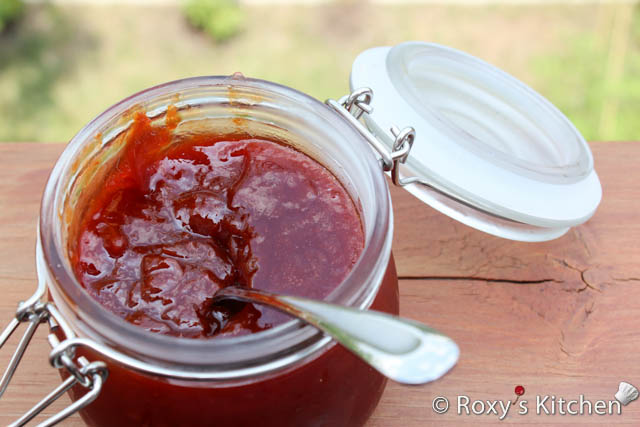
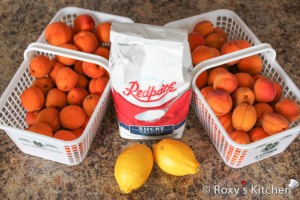
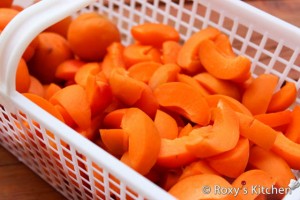
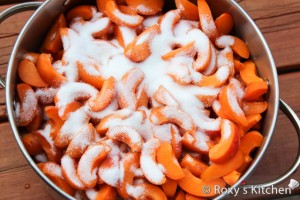
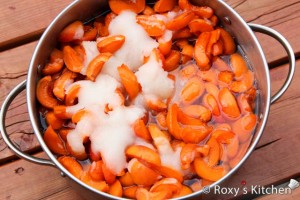
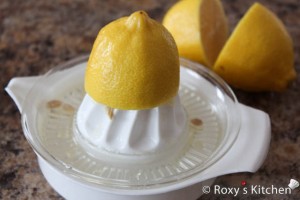
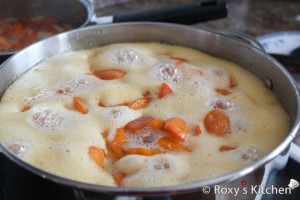
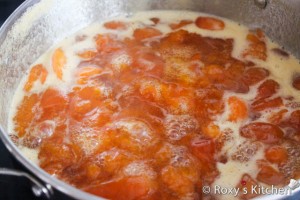
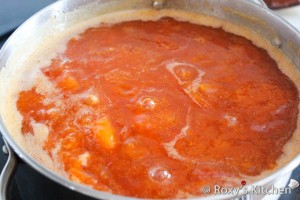

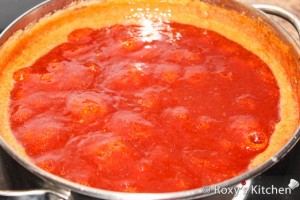

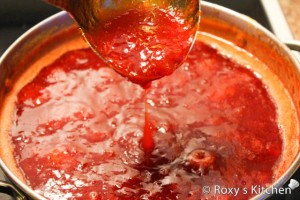
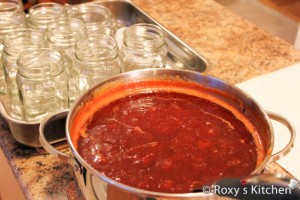
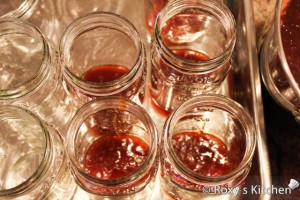
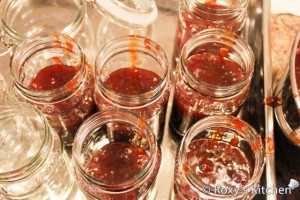
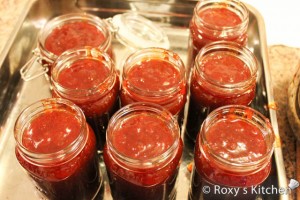
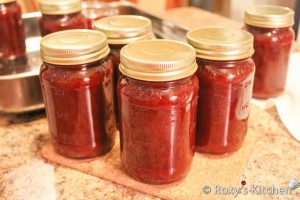
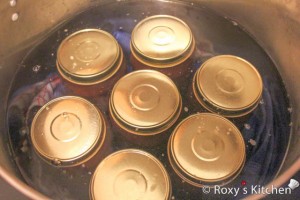
























Hi, I just wanted to ask if this jam can be made with dried apricots? Unfortunately, apricots aren’t in season where I live at the moment, but I do want to try out the recipe. If you could reply back asap, that would be really cool.
Thanks!
I’ve never tried it but I know you can use dried apricots as well. You need to soak them in boiling water until hydrated. I’m not sure what the water to apricot ratio is but if you try to google search this you can probably find it. Also, I’m not sure how/if the taste changes if you use dried apricots instead of fresh ones. Let me know how it turns out if you end up trying this.